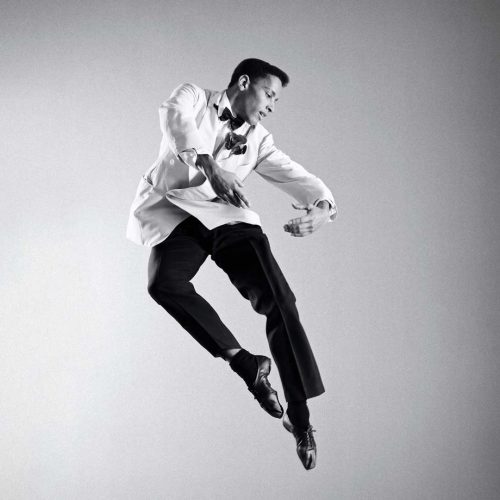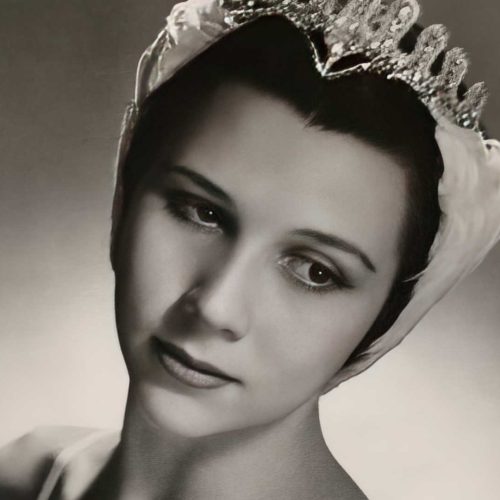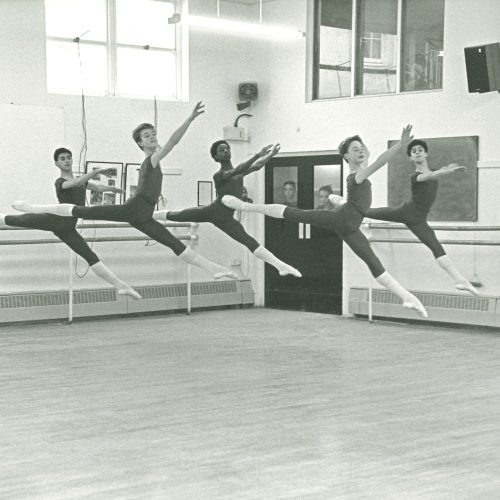By Brian Appleyard, writer and journalist
The 1960s is often seen as a golden age for ballet, but it was also an exciting time in all the arts.
“We need a futile gesture at this stage it will raise the whole tone of the war,” he says. Cook then instructs Miller to fly to Bremen and get himself killed.
This was from the Beyond the Fringe sketch show. It is entitled The Aftermyth of War. This was 1961 and World War II still burdened the British imagination. In 1963 the opening paragraph of Muriel Spark’s great novel The Girls of Slender Means is a fantasmagoric description of a world overthrown by the chaos of war.
“Some bomb-ripped buildings looked like the ruins of ancient castles until, at closer views, the wallpapers of various quite normal rooms would be visible, room above room, exposed as on a stage…”
To the sixties generation, gestures had become futile, ruined buildings had changed into castles and houses had been exposed as stage sets. We no longer knew who we were.
In truth we had been on the right side of a battle of good against evil. But victory seemed to have a sour taste. Our war leader, Churchill, was tossed out in an election barely two months after he had declared victory in Europe. The people wanted something different. But what?
Culturally, there are two phases to the answer to that question. The first, primarily in the fifties, was sceptical and negative; the second, primarily in the sixties, was sceptical and positive. Both had economic foundations. During the fifties the British economy improved only slowly so that six years of war was followed by more than a decade of austerity. This changed during the sixties. But scepticism persisted. The Beyond the Fringe sketch showed that even the story of the war was no longer protected. Deference had been abandoned.
Kingsley Amis’s novel Lucky Jim (1954) and John Osborne’s play Look Back in Anger (1958) were clearly in the first group. Amis’s hero Jim Dixon, an academic who, with withering irony, is obliged to give a lecture entitled Merrie England. In his university job he is surrounded by a cast of pretentious bores, arty types and neurotics. He triumphs but only by rejecting the entirety of respectable society at the time. Osborne’s Jimmy Porter is a similarly, though less comically, anti-establishment figure. His anguish is existential rather than social – “Why don’t we have a little game?” he says, “Let’s pretend that we’re human beings, and that we’re actually alive.”
The search was on for a postwar identity, less hampered by old mythologies and disciplines. Philip Larkin’s first major collection of poetry in 1955 was, pointedly, entitled The Less Deceived. But, as usual with Larkin, it’s not that simple. The greatest poem in the collection, Church Going, offers a very beautiful glimmer of light in his faithless gloom. Here there is something to be said for the old institutions, in this case religion.
A serious house on serious earth it is
In whose blent air all our compulsions meet,
Are recognised and robed as destinies.
All these works implicitly rejected – or rather ignored – pre-war modernism. But international modernism persisted in the visual arts, especially architecture, perhaps because its social and political aspirations made sense in the anti-establishment climate of the time.
Local imitations of Corbusier and Mies van der Rohe were – and still are – everywhere. They provided a programme for building that relieved the burden of the search for a British identity by giving ourselves an international one. We did, however, bring a local twist to these programmes. In particular, the concrete sculpting of Corbusier became the thunderous defiance of Brutalism, a style which revelled in its own bad manners. Buildings like Erno Goldfinger’s Trellick Tower celebrated its complete lack of contextual courtesy. Ian Fleming, a writer with a very pre-war, anti-modern sensibility, was so outraged by such buildings, he named one of his villains after Goldfinger. Brutalism was a local continuation of the deterministic ideology of modernism – the belief that history demanded a specific style.
Buildings take longer to make than paintings so perhaps it was inertia that preserved modernism in architecture. In painting and sculpture the most interesting development was the rejection of modernist forms, notably abstraction, by the group of painters that, much later, became known as the School of London. This was a disparate band that included Lucian Freud, David Hockney, R.B.Kitaj and Francis Bacon. Hockney is the crucial figure for my purposes as he is one of the most prominent figures in the second postwar phase.
Along with Eduardo Paolozzi and Richard Hamilton in Britain and Andy Warhol and Robert Rauschenberg in America, he was classified at the time as a “pop” artist. This involved a rejection of abstraction and the traditional materials as well as the subject matter of fine art and modernist traditions. So, for example, Warhol painted soup can using acrylic paint and Hamilton made collages of found materials from advertising and magazine articles. Hockney did all of these things but, most significantly, he moved to Los Angeles in the early sixties and there he created startling and vivid paintings that evoked a wealthy though ambivalent Californian paradise.
This was defiantly phase two – sceptical in the sense that he had rejected the British establishment but positive in the sense that he had found something better or, at least, different. While many of the London School were engaged in intense, dark expressionism, Hockney was basking in the sunshine. And, though the classification “pop” barely still clung to Hockney, it still remained central to the culture of the sixties.
As austerity faded, just getting by was no longer enough. People wanted to buy things but they also wanted new things. The art was called pop partly because it used the material of consumer society but also, more importantly, because it expressed a new sensibility. This was egalitarian – in this period wealth inequality actually declined – multi-cultural and sceptical of divisions between low and high art.
Pop music became rock and was subject to serious criticism in newspapers and on television shows like Late Night Line-up on BBC2. With their Sergeant Pepper album in 1967 the Beatles, having been heavily influenced by the lyric writing of Bob Dylan, suddenly had to be taken very seriously indeed. Britain had become a world cultural centre for precisely this elision of high and low cultural forms.
High art responded. Tom Stoppard’s play Rosencrantz and Guildenstern Are Dead in 1968 was a dazzling inversion of Shakespeare’s Hamlet, putting two of its most marginal characters at the centre of the action. The Danish royal crisis happens in the background, no one location is privileged because “every exit is an entry somewhere else.”
As drugs and the hippies appeared, the danger was implicit in all this was a loss of reality. One great foreigner, Michelangelo Antonioni, captured this in his film Blowup (1967). A London photographer clearly modelled on David Bailey finds himself drawn into a murder mystery from which he cannot escape. He comes across a bunch of hippies miming a game of tennis without racquets or balls. They call upon the photographer to fetch a non-existent ball that goes astray. He does so, accepting the unreal.
Politics stood against all that and politics for much of the decade meant America. The Cuban Missile Crisis in 1962, the assassination of President Kennedy in 1963 and the Vietnam War, which had rumbled on since 1955 but which exploded into prominence in 1964 all combined to make the US a country the British took personally. On the one hand we hungrily absorbed her culture; on the other we watched her politics with increasing dismay, With, first, Kennedy then his brother Robert and Martin Luther King assassinated a dark pall seemed to fall across the continent. The Vietnam War inspired a series of often violent demonstrations across the world. In March 1968 the American Embassy in Grosvenor Square was besieged by a vast demonstration that became seriously violent. Mick Jagger of the Rolling Stones said the violence was “a buzz”.
It was clear that the countercultures of pop and hippies did not live up to the needs of the hour. Counterculture now meant a readiness to accept the blood that had to be spilt in real revolutions. In the late sixties the mood darkened. Lindsay Anderson’s film If in 1968 showed a bloody revolution as pupils armed with machine guns slaughter the staff of a public school.
The sixties were clearly ending and the less glamorous, less colourful and much gloomier seventies had already begun. But at least we had finally put the war behind us.



